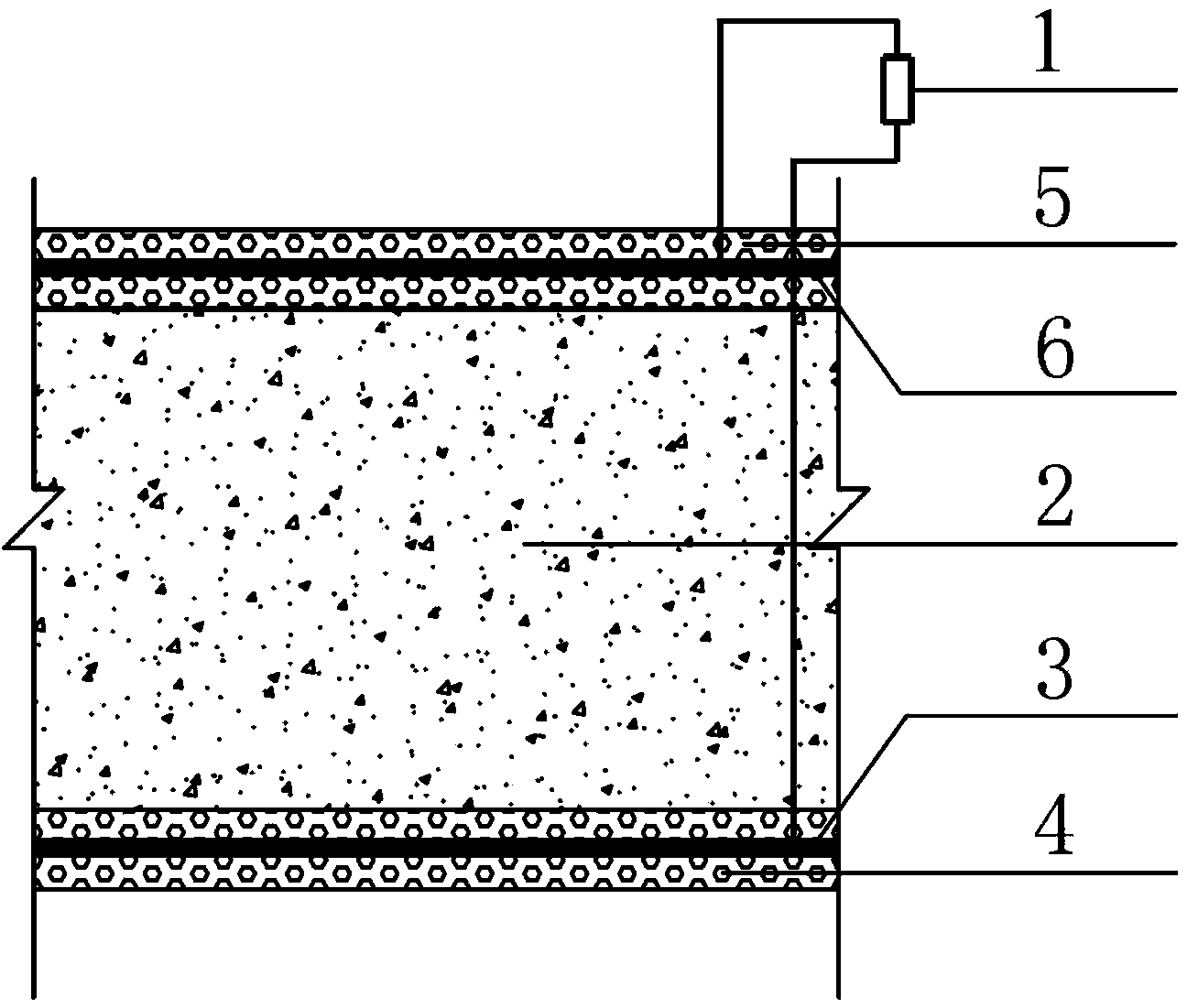Method and system for purifying soil with pesticide degradation-resistant organic pollutants by using microbial fuel cell
A fuel cell and organic pollution technology, applied in the field of environmental engineering, can solve the problems that are difficult to apply to OCPs polluted site remediation, and achieve the effect of efficient degradation
- Summary
- Abstract
- Description
- Claims
- Application Information
AI Technical Summary
Problems solved by technology
Method used
Image
Examples
Embodiment Construction
[0016] Such as figure 1 As shown, the system for establishing microbial fuel cells to purify refractory organic pollutants in the soil of the present invention is distributed with a buffer soil layer, an anode layer 4 , a soil layer to be treated 2 , and a cathode layer 5 from bottom to top. Wherein the anode layer and the cathode layer are respectively provided with an anode conductive material 3 and a cathode conductive material 6, for example, buried titanium mesh or carbon cloth etc. to enhance conductivity, which are respectively led out by wires and connected to an external resistor 1. The soil MFC established in the soil has a good effect on the removal of organic matter, and the organic matter in the soil is degraded by a large number of microorganisms in the inoculated anaerobic sludge.
[0017] The target soil is in a strict anaerobic environment, and the anaerobic digestion process of attached microorganisms removes organic matter in the soil. At this time, the act...
PUM
 Login to View More
Login to View More Abstract
Description
Claims
Application Information
 Login to View More
Login to View More - R&D
- Intellectual Property
- Life Sciences
- Materials
- Tech Scout
- Unparalleled Data Quality
- Higher Quality Content
- 60% Fewer Hallucinations
Browse by: Latest US Patents, China's latest patents, Technical Efficacy Thesaurus, Application Domain, Technology Topic, Popular Technical Reports.
© 2025 PatSnap. All rights reserved.Legal|Privacy policy|Modern Slavery Act Transparency Statement|Sitemap|About US| Contact US: help@patsnap.com

